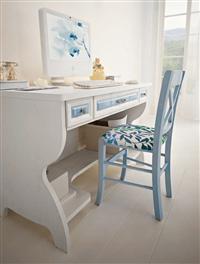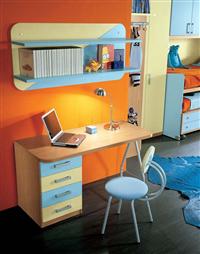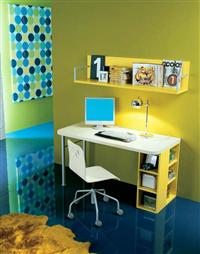By Maria Adams, Principal Designer of Interior Design Solutions by Maria, Inc
Wow, it’s already August and the first day of school is around the corner. Over the next few weeks you’ll be shopping for clothes, book bags and school supplies. But the one thing that rarely gets attention is preparing a student study space.
To assist my soon-to-be second grader, I am carving out a study area just for him. I have been told to expect more homework, more student responsibilities and more study time, so it’s essential that he have a dedicated place that he can accomplish his duties. As an interior designer, I recognize the importance of understanding your client’s needs and desires. Therefore, I interviewed my son to determine the best student study space that meets his learning style and his personal aesthetic.
Below are eight helpful tips for getting your child organized with an effective study area.
1. To be quiet or not to be: Does your child need a space that is completely quite or is a little white noise helpful?
 2. Work surface: Personally, I think it’s important to have a desk or table that is just for study or work. Most students use the kitchen table, but think about it. Would you be as productive if you had to do your work in the company breakroom? Perhaps the kitchen table is your only solution but if you can squeeze in a small desk into the corner of your kitchen or family room, you can create a dedicated study space.
2. Work surface: Personally, I think it’s important to have a desk or table that is just for study or work. Most students use the kitchen table, but think about it. Would you be as productive if you had to do your work in the company breakroom? Perhaps the kitchen table is your only solution but if you can squeeze in a small desk into the corner of your kitchen or family room, you can create a dedicated study space.
3. Make it comfortable: Use an age appropriate table and desk chair. The IKEA Galant adjustable desk is great for younger kids, that can be adjusted as they grow. Make sure your desk chair is comfortable and adjustable as well.
 4. Provide adequate lighting: Use an adjustable-arm desk lamp with a 14 watt (60 watt) daylight CFL light bulb. Bright light and saves energy.
4. Provide adequate lighting: Use an adjustable-arm desk lamp with a 14 watt (60 watt) daylight CFL light bulb. Bright light and saves energy.
5. Storage and supplies: Make sure you have the right supplies (paper, pencils, markers, scissors, glue, etc.) in arm’s reach. Provide ample storage such as drawers and baskets to keep items corralled.
6. Clutter Free: An organized space is an effective space. Clear your clutter before and after your study time.
 7. Make it fun: Include fun and inspiring items in your study space. Perhaps the pencil container is a wacky cup purchased on vacation. Post your favorite images on a corkboard or add wall decals. Frame a photo of your pet or set your winner’s trophy on your desk surface.
7. Make it fun: Include fun and inspiring items in your study space. Perhaps the pencil container is a wacky cup purchased on vacation. Post your favorite images on a corkboard or add wall decals. Frame a photo of your pet or set your winner’s trophy on your desk surface.
8. And lastly, get your child involved with creating his/her study space. The more input they have, the more likely they are to use it!!
Do you have other ideas that have worked too? Please share them as comments below!

Need more help with designing your child’s study space or adult home office? Contact Maria Adams, Principal Designer of Interior Design Solutions by Maria, Inc. at maria@IDSbyMaria.com.
Sponsored by Interior Design Solutions by Maria, Inc
Photo Credits: http://www.blackbathroom.net, http://www.centroarchitecture.com
















